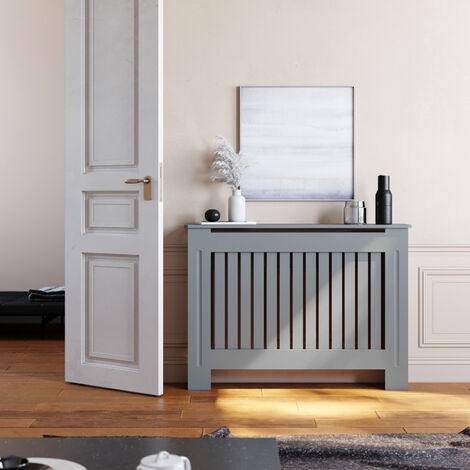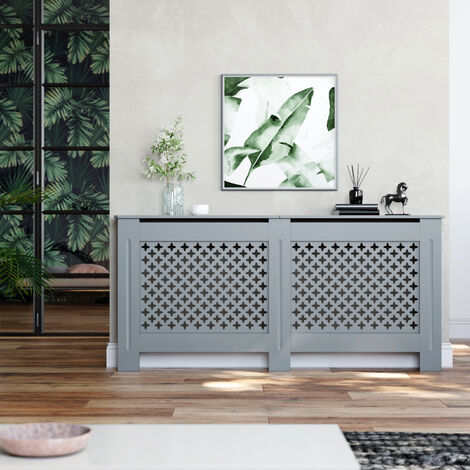Radiator Covers: Recognizing Products, Styles, and Advantages
Radiator covers serve both visual and functional functions within a home, supplying a variety of materials such as hardwood, metal, and MDF to fit numerous design preferences. Picking the right radiator cover includes understanding the nuances of products, styles, and their associated advantages.
Sorts Of Materials


Wooden covers, frequently crafted from woods such as oak or maple, give a classic, cozy look that complements conventional insides. Their sturdiness and capacity to be stained or painted add to their versatility. Metal covers, commonly made from steel or aluminum, are favored for their toughness and modern look, often featuring smooth lines that boost modern spaces.
MDF, a manufactured wood product, is prominent for its cost-effectiveness and simplicity of modification. It can be repainted or finished to match existing design while using a smooth surface area. Plastic covers, while much less typical, are light-weight and immune to dampness, making them ideal for moist settings.
Ultimately, the choice of material for a radiator cover ought to align with the property owner's style preferences, functional requirements, and the particular environment where the cover will be set up. Each product uses a distinctive personality, making sure that there is a choice to fit every taste and setting.
Popular Design Styles
Emphasizing visual allure, preferred layout styles for radiator covers show a series of tastes and interior layout fads. Standard styles commonly feature elaborate woodwork and ornate describing, making them ideal for vintage-inspired or traditional interiors. These covers commonly include carved elements, offering a cozy and welcoming feel to any type of space.
In comparison, contemporary styles focus on minimal aesthetic appeals, identified by clean lines and understated style. Materials such as metal or streamlined wood with a smooth coating are generally utilized, permitting these covers to mix perfectly right into contemporary rooms. Industrial styles, on the various other hand, welcome resources like exposed steel and concrete, adding a vibrant statement to loft space or metropolitan setups.
For those seeking a distinct touch, bespoke designs supply personalization alternatives that accommodate private choices, allowing home owners to select colors, patterns, and products that enhance their design. In addition, farmhouse-style covers incorporate rustic elements, featuring distressed timber and simple types that stimulate a comfy, country charm.
Benefits of Radiator Covers
Radiator covers not only enhance the aesthetic allure of a space yet additionally provide several functional advantages that make them a worthwhile addition to any type of home. One of the key advantages is safety, particularly in homes with pets or kids. Covers lower the risk of burns from warm radiator surface areas, guaranteeing a much safer atmosphere.
Furthermore, radiator covers can enhance power effectiveness. By guiding warm into the space rather than enabling it to get away, they assist preserve a constant temperature, minimizing heating expenses in time. This is particularly helpful in older homes where radiator systems might be less efficient.
Another notable benefit is sound decrease. Radiators can occasionally generate undesirable noises throughout procedure, and covers can aid smother these noises, contributing to a more tranquil home. Radiator covers can be practical, supplying extra storage or display room, consequently making best use of the energy of often-overlooked areas.
Lastly, they can protect radiators from dust and debris, which can hinder efficiency and boost maintenance demands. With these integrated advantages, radiator covers become a useful solution for improving both the performance and design of any home setting.
Setup Factors To Consider
Mounting radiator covers requires careful factor to consider to ensure both capability and safety (Radiator cover). Initially, examine the dimensions of your radiator and the surrounding area to ensure an appropriate fit. Exact measurements are crucial; an ill-fitting cover can block warmth flow or produce safety and security dangers
Following, evaluate the material of this hyperlink the cover. While timber offers aesthetic allure, steel options may supply better longevity and heat resistance. Think about the weight of the cover too; larger covers may need extra assistance or reinforcements to prevent drooping or damages over time.
Air flow is another important facet. Covers must feature appropriate air movement to avoid getting too hot and keep effective home heating. Seek designs with slats or openings that allow warmth to flow without obstruction.
Furthermore, make certain that the cover is firmly placed to stop accidents, especially in homes with animals or kids. Radiator cover. It's a good idea to comply with the supplier's installment standards carefully and, if needed, get in touch with a specialist for intricate setups
Maintenance and Care Tips
Correct maintenance of radiator covers is vital for guaranteeing their durability and optimal efficiency. For painted or wood covers, take into consideration an appropriate polish or safety covering to keep their appearance.
Check the covers regularly for signs of wear or damages, such as fractures or peeling off paint. Addressing these problems quickly can protect against additional deterioration. Make certain that the covers are securely attached and look for any kind of loose screws or installations, as vibrations from the radiator can loosen them with time.
In cooler months, prevent positioning heavy items or decorative products in addition to the radiator covers, as this can hinder warmth distribution and trigger unneeded tension to the framework. Consider seasonal maintenance by getting rid of the covers for thorough cleaning and examination throughout warmer months when the home heating system is inactive. Embracing these basic treatment tips will improve the efficiency and click reference visual allure of your radiator covers, ensuring they serve their function successfully for several years ahead.

Verdict
In summary, radiator covers offer as useful and aesthetic improvements to household spaces. Cautious factor to consider of installment and upkeep further guarantees the durability and performance of radiator covers in any home environment.
Radiator covers serve both visual and useful objectives within a home, offering a range of materials such as hardwood, metal, and MDF to suit different style choices. Selecting the ideal radiator cover entails understanding the nuances of materials, designs, and their associated advantages.Stressing visual appeal, popular layout styles for radiator covers mirror an array of preferences and indoor layout fads.Radiator covers not just improve the aesthetic allure of an area yet additionally use a number of functional benefits that make them a beneficial enhancement to any home. Consider the sites weight of the cover as well; heavier covers might call for extra support or reinforcements to avoid drooping or damages over time.